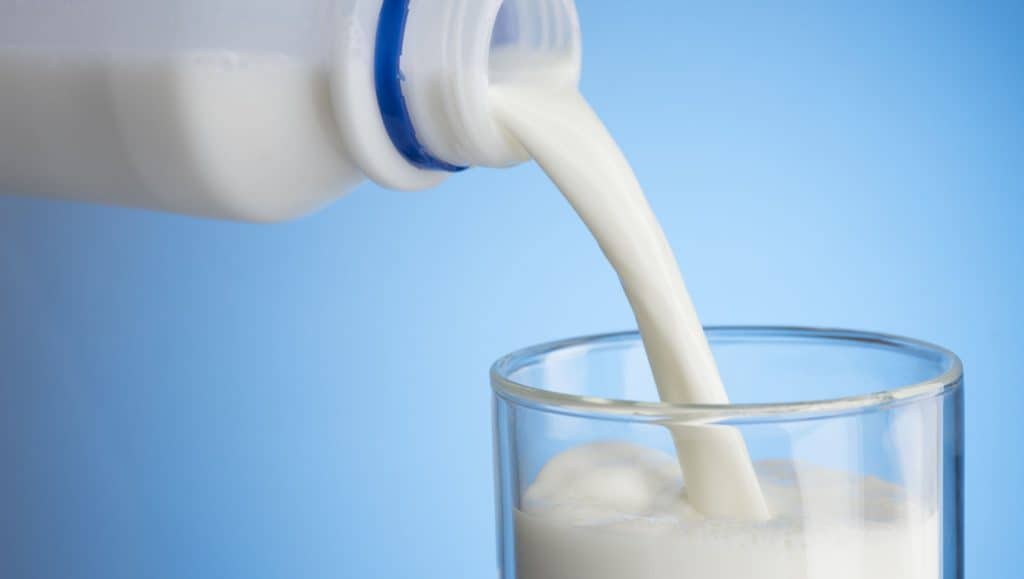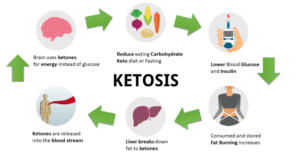What Is Skimmed Milk?
Skimmed Milk, when put simply, is the milk that has had most of the butterfat removed and some nutrients added by fortification. So that usually has between 0% and 0.1% fat content. It\’s also common to hear people talk about “fat-free” milk.
And the main difference in the nutrition profile of whole and skim milk is the calories and fat content. This means it contains no fat, and the total amount of calories is much lower.
How is Skim Milk Made?
To make it, producers use a centrifugal separator to remove the fat globules from it. During this process, the fat separated from it and run off into two spouts leading to different containers within the centrifuge. These containers are for their collection.
Regular vs Skimmed Milk
There are different types of milk available in the dairy aisle of most grocery stores. They mainly differ in their fat content. Whole milk is sometimes referred to as “regular milk” because the amount of fat it contains has not changed. Skim milk is made by removing fat from whole milk.
The fat contents of popular milk varieties are:
Whole milk: 3.25% milk fat
Low-fat milk: 1% milk fat
Skim: Less than 0.5% milkfat
Vit. D is another nutrient that can differ depending on the fat content. So, in milk, it is naturally present only in fat. Studies have shown that organic whole accommodates a lofty amount of omega-3s than regular whole milk.
Milk and Weight Loss
A lot of folks avoid drinking whole because they assume the extra fat and calories will cause them to gain pounds. And many studies have shown that consuming elevated-fat dairy products, such as whole, may actually help prevent mass gain.
So, the relationship between milk and weight management has been a topic of research for several years and findings have been inconsistent. But most of these studies include all types of dairy products or focus on low-fat dairy. Studies looking only at extra-fat dairy products, such as whole milk, show a fairly consistent link between high-fat dairy products and lower-body heaviness.
Milk and Chronic Diseases
There is no scientific evidence that saturated fats together cause heart disease, but several studies have shown that consuming whole milk is associated with health benefits. Many studies have shown that drinking whole milk is associated with a lower risk of metabolic syndrome.
These risk factors, combined, increase the risk of diabetes and heart disease. And the fatty acids in whole milk are likely responsible for its health benefits.
Situations where Skimmed Milk is Beneficial
So, if you are on a low-calorie diet, you can opt for skimmed milk. Skimmed milk also offers the advantage of being a relatively low-calorie source of protein. Whole, skimmed foods contain about 8 grams of protein per cup.
Skim provides a large dose of nutrition and minerals with very few calories. Plus, it’s one of the richest dietary sources of calcium, providing around 300 mg per cup. This is therefore also more than the calcium content of whole milk, which is 276 mg per cup.
And there may be some circumstances where skim is the best choice, but for most people, whole milk offers clear nutritional advantages over skim low-fat milk. Drinking whole milk regularly can also help you manage your volume over time and reduce your risk of metabolic syndrome.
Nutritional Information for Skimmed Milk (100g)
Total Fat 0.2g
Saturated Fat 0.1g
Polyunsaturated Fat 0g
Monounsaturated Fat 0.1g
Cholesterol 4.9mg
Sodium 103mg
Potassium 382mg
Total Carbohydrates 12g
Dietary Fiber 0g
Sugars 12g
Protein 8.3g
Glycemic Index Of Skimmed Milk
The glycemic index (GI) is a measure of how quickly a food raises blood sugar levels. Foods are ranked on a scale of 0 to 100 based on how quickly they are absorbed and converted into glucose, with higher values indicating a faster rise in blood sugar.
Skimmed milk, also known as nonfat milk, has a glycemic index of 32. This falls into the low GI category, meaning that it has a relatively slow effect on blood sugar levels compared to other carbohydrates. Foods with a GI value of 70 or higher are considered high, while those with a GI value of 56 to 69 are considered medium, and those with a GI value of 55 or lower are considered low.
It is important to note that the glycemic index is only one factor to consider when assessing the effect of food on blood sugar levels. Other factors, such as the type and amount of carbohydrates, the presence of other nutrients, and the overall calorie content of the food, can also affect blood sugar levels.
In general, low GI foods are absorbed more slowly and may help to regulate blood sugar levels, which can be beneficial for people with diabetes or those trying to manage their weight. However, it is important to remember that the glycemic index is not the only factor to consider when making food choices and that a balanced diet that includes a variety of foods is important for overall health.
In conclusion, skimmed milk has a low glycemic index and may have a slower effect on blood sugar levels compared to other carbohydrates. However, it is important to consider the overall nutritional value of food and to maintain a balanced diet in order to support overall health.
Protein Content
Skim milk contains all of the essential amino acids in sufficient amounts to be considered a complete protein. So with that in mind, skim milk is the best option if someone is looking to increase their protein intake by adding a minimal amount of calories.
Calcium Content
And just like whole milk, cheese, and most dairy products, skim milk contains staggering amounts of calcium. And it helps in the formation, growth, and repair of bone. Thus, an increase in calcium intake is also associated with a reduced risk of colon cancer.
Fat-Soluble Vitamins
So, whole milk contains a range of naturally occurring fat-soluble vitamins and including Vit A, Vit D, and Vit E. And all these are fat-soluble, thus when the manufacturing process removes the fat from skim milk, it also loses the majority of these vitamins.
Blood Sugar Response
Skim milk holds the same amount of lactose as whole milk. However, this milk sugar contributes an additional percentage to the total energy. Previously, we have seen how skim milk is higher in protein than whole milk due to the lower caloric intake. In this regard, skimmed milk also has a much higher sugar (lactose) density than whole milk. But even though skim milk has a much higher sugar density than whole milk, but it doesn’t seem to cause a higher glycemic response.
The Taste
Skim milk doesn’t taste as good as whole milk, and it has a more watery mouthfeel.
While some people may prefer it, they would be in the minority. On the plus side, it offers a similar range of nutrients and minerals, plus more protein per calorie. However, whole milk tastes better and provides all the nutrients in its natural proportions.
After going through the pros and cons of skim milk, we hope you were able to decide whether it is the right choice for you or not. However, if a Ketogenic diet is on your mind, this low-fat milk might not be the best option for you.
Get started with your Weight Loss Journey today and take a step towards a healthy lifestyle! Stay tuned for inspiring Weight Loss Journeys, and Delicious Recipes! Also, don’t forget to follow us on Instagram for the daily dose of Health, and Wellness content!











